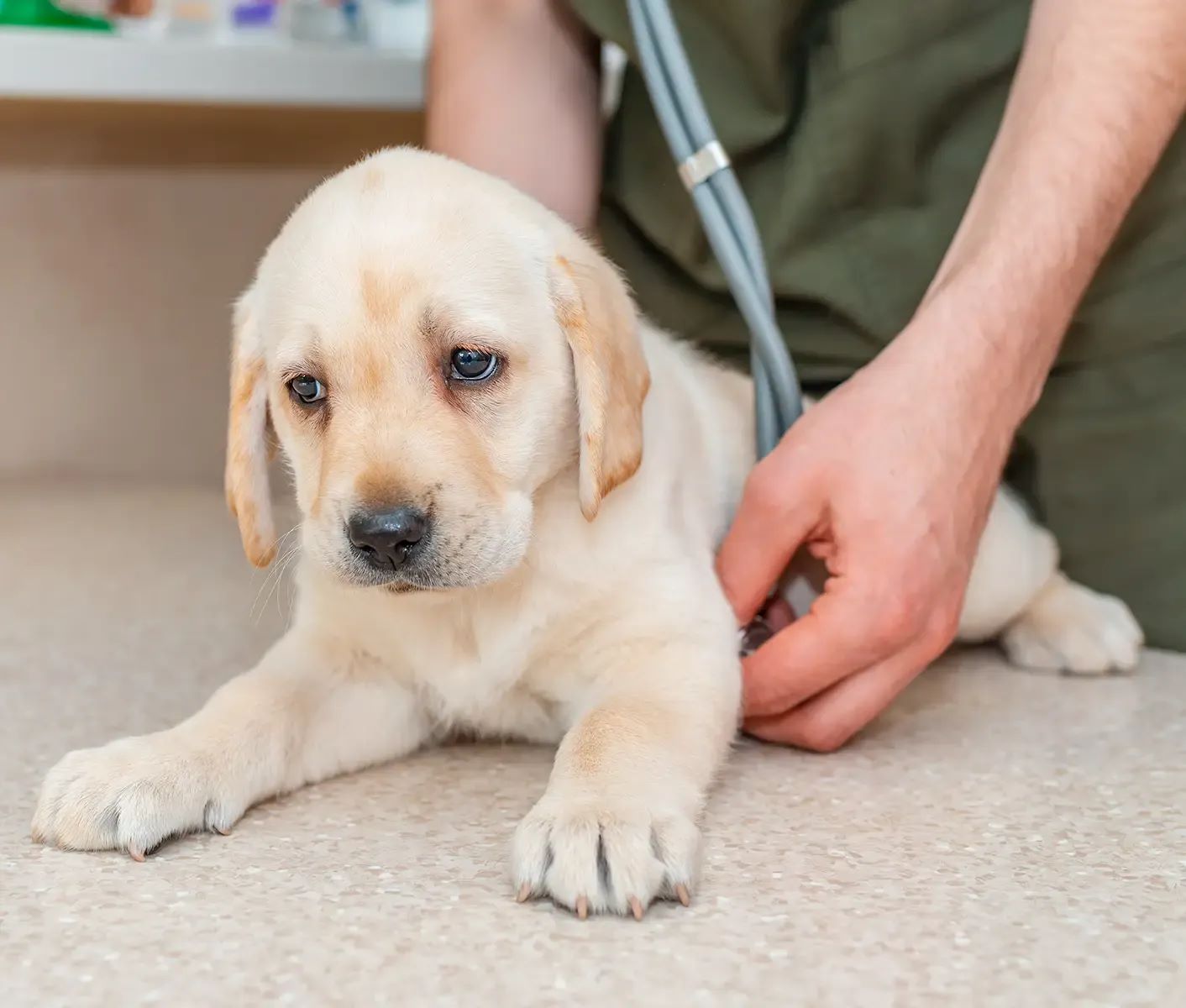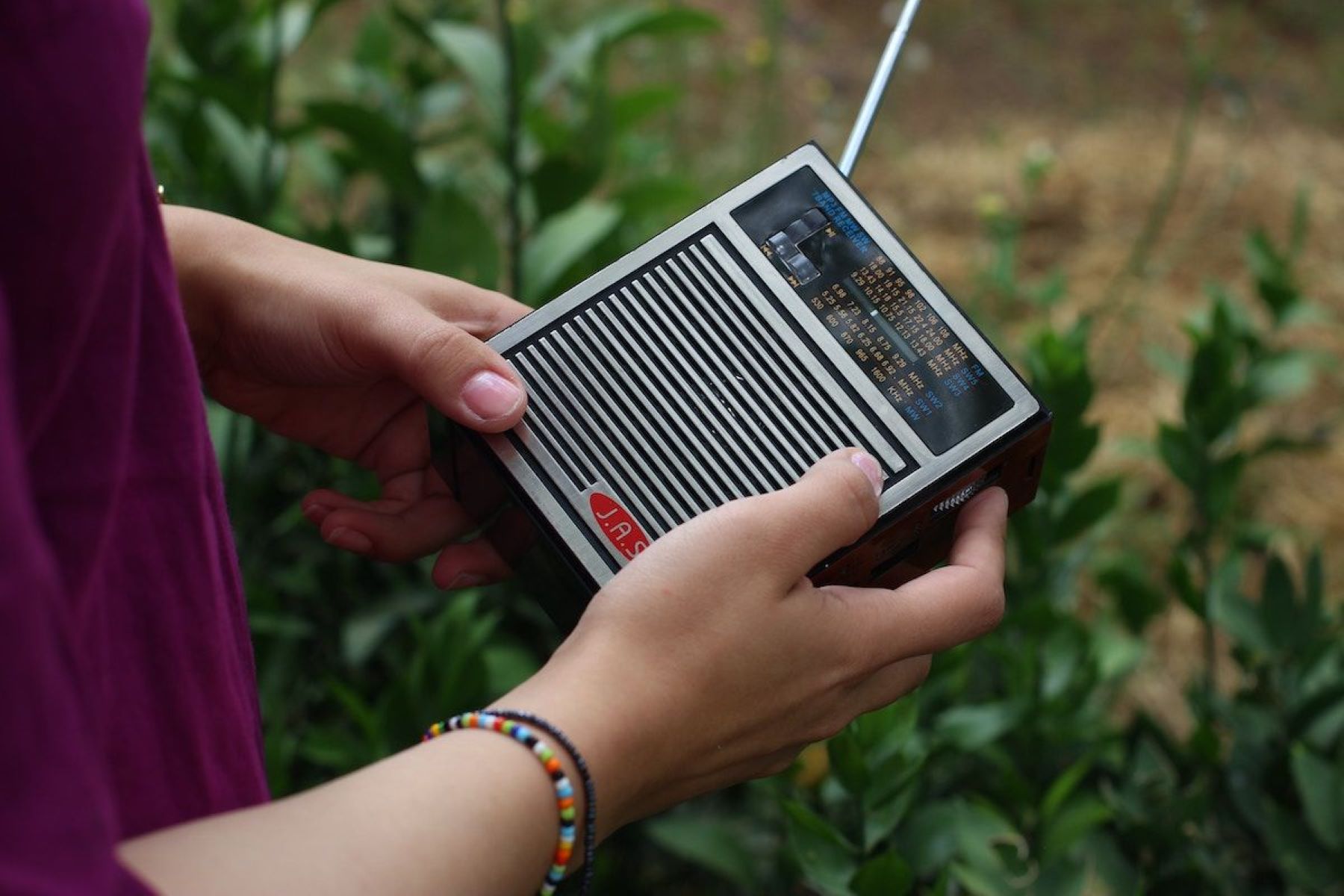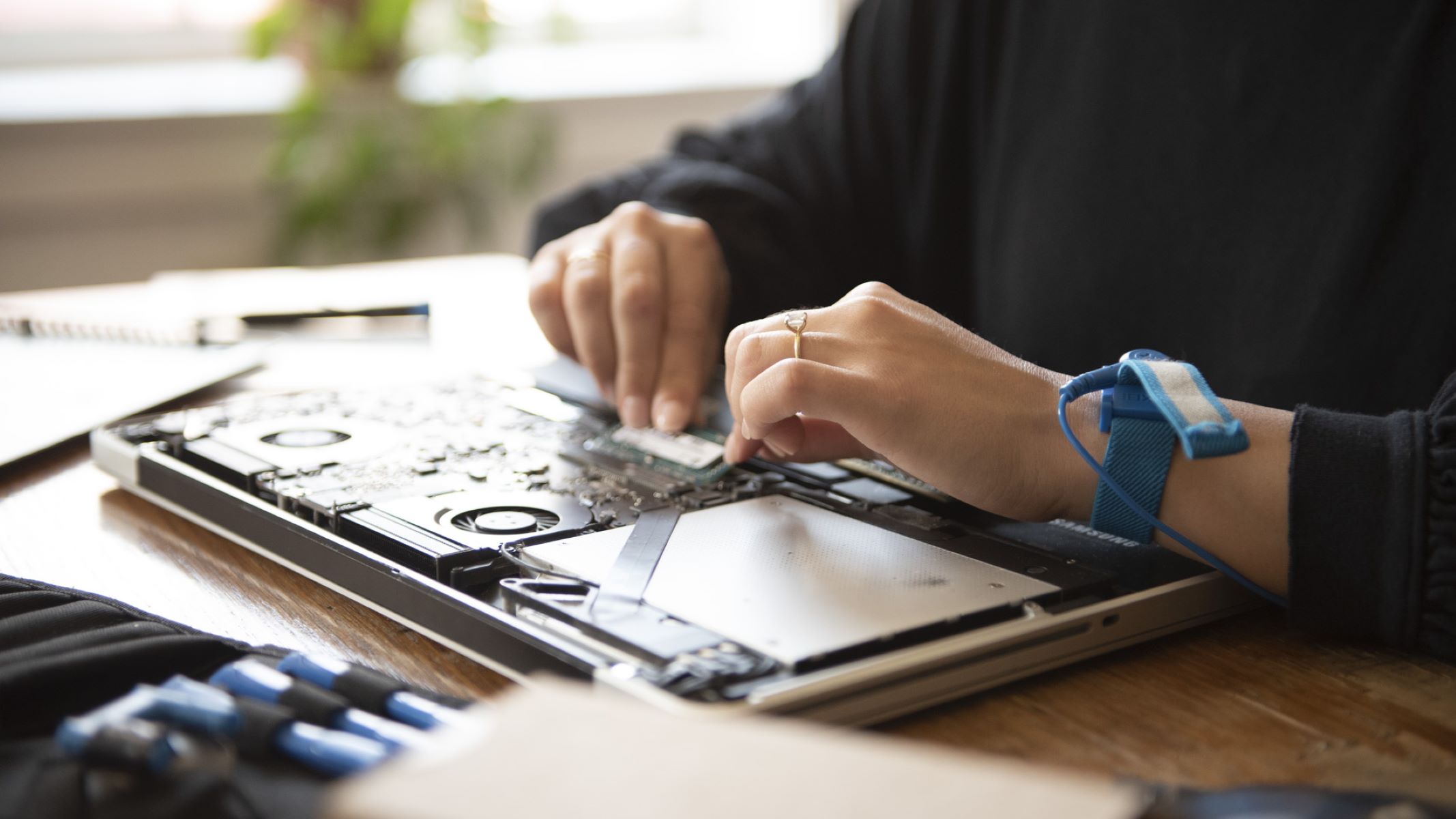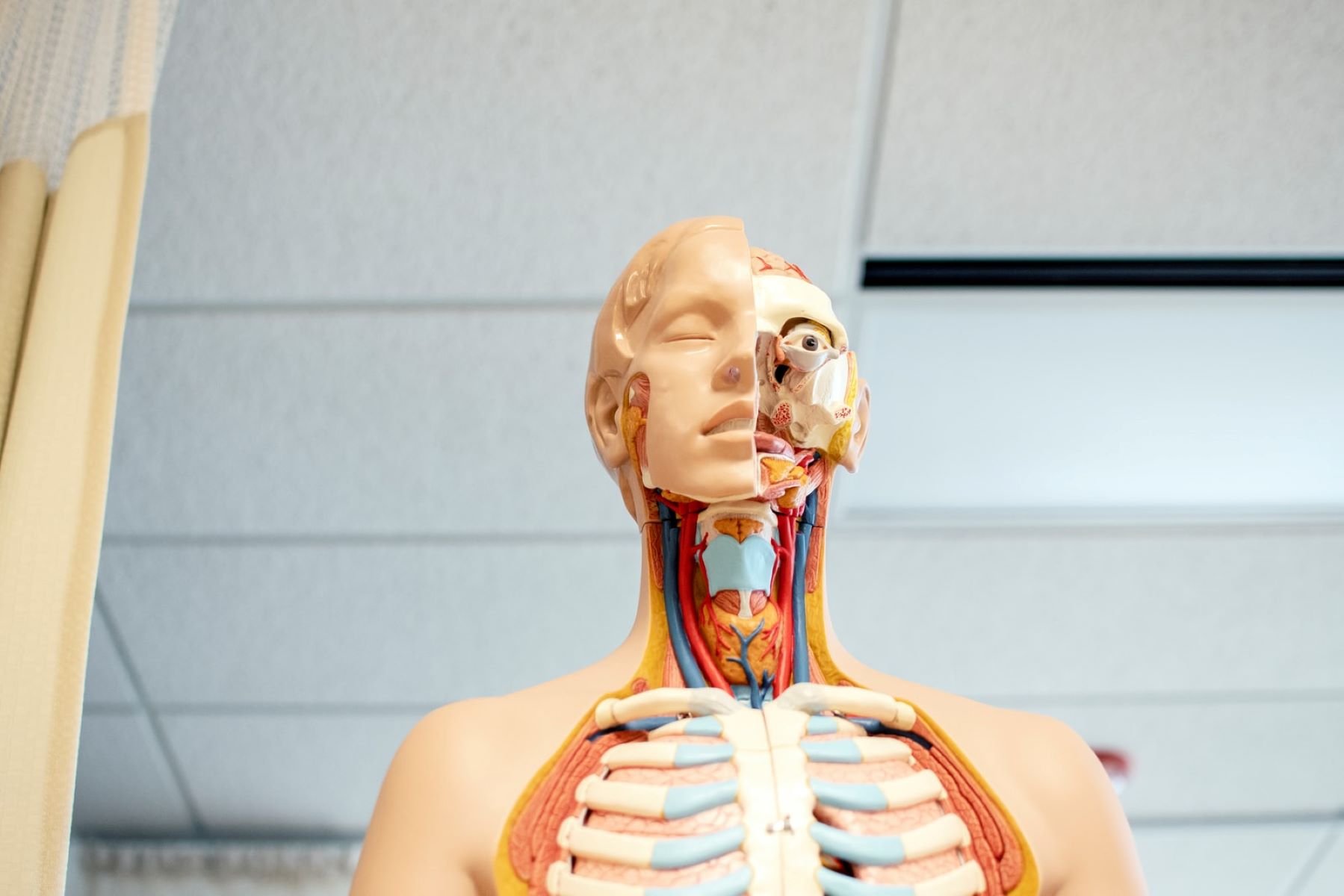Home>Health and Wellness>The Shocking Truth About Parvo’s Early Stages


Health and Wellness
The Shocking Truth About Parvo’s Early Stages
Published: January 21, 2024
Discover the early signs of parvo and how to protect your pet's health and wellness. Uncover the truth about parvo's early stages and take action today.
(Many of the links in this article redirect to a specific reviewed product. Your purchase of these products through affiliate links helps to generate commission for Regretless.com, at no extra cost. Learn more)
Table of Contents
Introduction
Parvo, a highly contagious and potentially fatal viral infection, poses a significant threat to the health and well-being of our beloved canine companions. Understanding the early stages of this disease is crucial for prompt detection and intervention, ultimately increasing the chances of a positive outcome for our furry friends.
As responsible pet owners, it is our duty to be vigilant and informed about the risks associated with Parvo. By gaining insights into the early symptoms, transmission methods, diagnosis, treatment, and prevention strategies, we can effectively safeguard our pets from this perilous infection.
In the following sections, we will delve deeper into the intricacies of Parvo, shedding light on its nature, symptoms, and the measures we can take to protect our canine companions. By arming ourselves with knowledge, we can empower ourselves to recognize the signs of Parvo in its early stages, seek timely veterinary care, and take proactive steps to prevent its spread.
What is Parvo?
Parvo, short for canine parvovirus, is a highly contagious viral illness that primarily affects dogs, especially puppies and unvaccinated adult dogs. The virus is resilient and can survive in the environment for extended periods, making it particularly challenging to eradicate. Parvo manifests in two forms: intestinal and cardiac. The intestinal form is the most common and is characterized by severe gastrointestinal symptoms, while the cardiac form affects the heart muscles of very young puppies, often leading to sudden death.
The virus spreads through direct contact with an infected dog or by indirect contact with contaminated surfaces, such as food and water bowls, collars and leashes, and the environment where an infected dog has been. Once a dog is exposed to the virus, it attacks rapidly dividing cells in the body, particularly the cells lining the gastrointestinal tract and the white blood cells, leading to severe damage to the intestines and immune system.
Due to its high contagiousness and resilience, Parvo poses a significant risk in environments where dogs congregate, such as shelters, kennels, and dog parks. Furthermore, the virus can survive in the environment for months, even in the absence of a host, making it a persistent threat to unvaccinated or under-vaccinated dogs.
Recognizing the severity of this virus, responsible pet ownership involves proactive measures to prevent the spread of Parvo. This includes ensuring that all dogs are appropriately vaccinated, especially puppies who are more vulnerable to the virus. Additionally, maintaining good hygiene practices, such as regular cleaning and disinfection of living areas and avoiding contact with unknown or potentially infected dogs, can help mitigate the risk of exposure.
Understanding the nature of Parvo is fundamental in safeguarding the health and well-being of our canine companions. By being aware of the virus's characteristics, transmission methods, and the potential consequences of infection, pet owners can take informed steps to protect their dogs and prevent the spread of this dangerous illness.
Early Symptoms of Parvo
Recognizing the early symptoms of Parvo is pivotal in providing timely intervention and improving the chances of a positive outcome for affected dogs. The initial signs of Parvo often manifest within 3 to 10 days after exposure to the virus. It is crucial for pet owners to be vigilant and observant, as early detection can significantly impact the course of the disease.
-
Gastrointestinal Distress: The early stages of Parvo are characterized by severe gastrointestinal distress. Affected dogs may exhibit symptoms such as vomiting, often severe and persistent, and diarrhea, which is frequently bloody and foul-smelling. The presence of blood in the stool is a significant indicator of Parvo and should prompt immediate veterinary attention.
-
Loss of Appetite: Dogs infected with Parvo often experience a sudden and dramatic loss of appetite. This decreased interest in food, coupled with the vomiting and diarrhea, can lead to rapid dehydration and malnutrition, further exacerbating the severity of the illness.
-
Lethargy and Weakness: A notable decrease in energy levels and overall lethargy is a common early symptom of Parvo. Infected dogs may appear unusually tired, weak, and uninterested in activities that would typically engage them. This lethargy is often a result of the body's immune response to the virus and the strain it places on the dog's system.
-
Dehydration: The combination of persistent vomiting and diarrhea can lead to rapid dehydration in dogs with Parvo. Pet owners should monitor their dog's hydration status closely, looking for signs such as dry gums, sunken eyes, and decreased skin elasticity. Dehydration can escalate quickly and exacerbate the severity of the illness, underscoring the urgency of seeking veterinary care.
-
Fever: Many dogs infected with Parvo develop a fever in the early stages of the illness. Monitoring a dog's body temperature can provide valuable insights into their health status. A persistent or high fever, especially when accompanied by other symptoms, warrants immediate veterinary attention.
Recognizing these early symptoms of Parvo is instrumental in seeking prompt veterinary care, as the disease can progress rapidly and lead to life-threatening complications if left untreated. Pet owners should prioritize regular vaccinations, maintain good hygiene practices, and seek immediate veterinary attention if they suspect their dog may be exhibiting signs of Parvo. By staying informed and proactive, we can protect our beloved canine companions from the perils of this insidious virus.
How Parvo Spreads
Parvo spreads through direct and indirect contact with the virus, posing a significant risk to unvaccinated or under-vaccinated dogs. Understanding the transmission methods of Parvo is crucial in implementing effective preventive measures and minimizing the risk of exposure for our canine companions.
Direct Contact:
Direct contact with an infected dog is one of the primary ways Parvo spreads. This can occur through interactions such as sniffing, licking, or playing with an infected dog. The virus is shed in the feces, and infected dogs can carry and spread the virus even before showing symptoms. As a result, seemingly healthy dogs can inadvertently transmit the virus to others, making it challenging to identify and contain the spread.
Read more: The Shocking Truth About “Hella” In The US
Indirect Contact:
Parvo can also spread through indirect contact with contaminated environments or objects. The virus is highly resilient and can survive in the environment for extended periods, making it particularly insidious. Dogs can become infected by coming into contact with contaminated surfaces, such as food and water bowls, collars and leashes, bedding, and even the ground in areas where infected dogs have been. Additionally, the virus can be transmitted through human interaction, as the virus particles can cling to clothing, shoes, and hands, facilitating its spread to other locations and dogs.
High-Risk Environments:
Certain environments pose a heightened risk for the transmission of Parvo. Places where dogs congregate, such as shelters, kennels, dog parks, and grooming facilities, are particularly susceptible to the spread of the virus. The close proximity of multiple dogs in these settings increases the likelihood of direct and indirect transmission, underscoring the importance of stringent hygiene practices and vaccination protocols to mitigate the risk.
Prevention and Vigilance:
Preventing the spread of Parvo requires a multi-faceted approach. Vaccination is a cornerstone of defense, as it provides essential immunity against the virus. Puppies, in particular, should receive a series of vaccinations starting at a young age to bolster their protection. Additionally, maintaining good hygiene practices, such as regular cleaning and disinfection of living areas, thorough handwashing after handling dogs, and avoiding contact with unknown or potentially infected dogs, can help minimize the risk of exposure.
By understanding how Parvo spreads and the potential transmission pathways, pet owners can take proactive steps to protect their dogs and prevent the spread of this dangerous virus. Through vaccination, diligent hygiene practices, and responsible pet ownership, we can work collectively to create safer environments for our beloved canine companions.
Diagnosis of Parvo
Diagnosing Parvo requires a multi-faceted approach that encompasses clinical evaluation, laboratory tests, and thorough assessment of the dog's medical history and symptoms. Given the severity and contagious nature of the virus, prompt and accurate diagnosis is essential for initiating appropriate treatment and preventing the spread of the infection.
Clinical Evaluation:
Veterinarians rely on a comprehensive clinical evaluation to assess the dog's overall health and detect potential signs of Parvo. This includes a thorough physical examination to identify symptoms such as vomiting, diarrhea (potentially bloody), lethargy, dehydration, and fever. The veterinarian may also inquire about the dog's vaccination history and recent exposure to other dogs or high-risk environments.
Laboratory Tests:
Laboratory tests play a pivotal role in confirming a Parvo diagnosis. The most common diagnostic test for Parvo is the enzyme-linked immunosorbent assay (ELISA) test, which detects the presence of Parvo antigens in the dog's feces. Additionally, complete blood count (CBC) and serum chemistry tests may be conducted to assess the dog's white blood cell count, electrolyte levels, and overall health status.
Medical History and Symptoms:
A detailed medical history, including the dog's vaccination records and recent activities, provides valuable insights into the potential risk of Parvo. The veterinarian will inquire about the onset and progression of symptoms, including the duration and severity of vomiting, the nature of diarrhea, changes in appetite, and any recent exposure to other dogs or contaminated environments.
Differential Diagnosis:
In some cases, Parvo symptoms may overlap with other gastrointestinal illnesses or infections. The veterinarian will conduct a thorough differential diagnosis to rule out other potential causes of the dog's symptoms, such as dietary indiscretion, bacterial or parasitic infections, and other viral illnesses. This comprehensive approach ensures an accurate diagnosis and appropriate treatment plan.
Timely Intervention:
Given the rapid progression of Parvo and its potential to cause severe complications, timely intervention is paramount. Upon confirmation of a Parvo diagnosis, the veterinarian will initiate aggressive treatment to address dehydration, control vomiting and diarrhea, and provide supportive care to bolster the dog's immune response.
Ongoing Monitoring:
Following a Parvo diagnosis, ongoing monitoring and supportive care are crucial for the dog's recovery. This may involve hospitalization, intravenous fluid therapy, nutritional support, and close observation of the dog's clinical progress. Additionally, strict isolation protocols may be implemented to prevent the spread of the virus to other dogs.
By employing a comprehensive approach to diagnosis, veterinarians can swiftly identify Parvo and implement targeted treatment strategies, ultimately improving the prognosis for affected dogs while safeguarding the broader canine community from the threat of this highly contagious virus.
Treatment for Parvo
The treatment of Parvo requires a multi-faceted approach aimed at addressing the severe symptoms and complications associated with the virus. Upon diagnosis, affected dogs require immediate and intensive veterinary care to combat the effects of the infection and improve their chances of recovery.
Supportive Care:
Supportive care forms the cornerstone of Parvo treatment. Dehydration is a significant concern due to the persistent vomiting and diarrhea, and intravenous fluid therapy is essential to restore and maintain the dog's hydration and electrolyte balance. This critical aspect of treatment helps mitigate the risk of organ damage and systemic shock caused by dehydration.
Read more: The Shocking Truth About Chill Soda
Nutritional Support:
Maintaining adequate nutrition is vital for dogs battling Parvo. However, the severe gastrointestinal symptoms often lead to a decreased appetite, making it challenging for affected dogs to consume and retain food. Veterinarians may administer nutrients and electrolytes intravenously or through specialized feeding tubes to ensure the dog receives essential sustenance during this critical period.
Medication:
Medication plays a crucial role in managing the symptoms and complications of Parvo. Anti-nausea medications are administered to alleviate vomiting, while antibiotics may be prescribed to prevent or treat secondary bacterial infections that can arise due to the compromised immune system. Additionally, medication to control fever and provide gastrointestinal support may be included in the treatment regimen.
Isolation and Environmental Management:
Dogs diagnosed with Parvo require strict isolation to prevent the spread of the virus to other dogs. Veterinary facilities implement stringent protocols to minimize the risk of transmission, including separate housing, dedicated equipment, and thorough disinfection of the environment to eliminate viral particles. These measures are essential in containing the virus and protecting the broader canine population.
Ongoing Monitoring:
Continuous monitoring of the dog's clinical status is imperative throughout the treatment process. Veterinarians closely observe vital signs, hydration levels, and overall response to treatment, adjusting the care plan as needed to address any emerging complications or setbacks. This vigilant oversight is instrumental in optimizing the dog's chances of recovery.
Long-Term Recovery and Immunity:
Recovering from Parvo is a challenging and often protracted process. Even after the acute phase of the illness has passed, dogs may experience lingering effects and require ongoing support to regain their strength and vitality. Additionally, vaccination and immune-boosting measures are essential to fortify the dog's defenses against future encounters with the virus.
By implementing a comprehensive treatment approach that addresses the immediate symptoms, complications, and long-term recovery needs of affected dogs, veterinarians strive to improve the prognosis for Parvo cases. Through diligent care, attentive monitoring, and strategic intervention, the veterinary community endeavors to support the recovery and well-being of dogs impacted by this formidable viral infection.
Prevention of Parvo
Preventing Parvo requires a proactive and multi-faceted approach aimed at minimizing the risk of exposure and bolstering the immunity of our canine companions. Responsible pet owners play a pivotal role in implementing preventive measures that safeguard their dogs from this highly contagious and potentially life-threatening virus.
Vaccination:
Vaccination stands as the most effective defense against Parvo. Puppies should receive a series of vaccinations starting at 6-8 weeks of age, with additional boosters administered at regular intervals until they reach adulthood. Adult dogs should also receive regular vaccinations to maintain their immunity. Ensuring that all dogs are up to date with their Parvo vaccinations significantly reduces the risk of infection and helps create a safer environment for the broader canine community.
Hygiene and Environmental Management:
Maintaining a clean and hygienic living environment is essential in preventing the spread of Parvo. Regular cleaning and disinfection of living areas, food and water bowls, bedding, and other surfaces help eliminate viral particles and reduce the risk of contamination. Additionally, practicing good hygiene, such as thorough handwashing after handling dogs and avoiding contact with unknown or potentially infected dogs, further minimizes the risk of transmission.
Limiting Exposure to High-Risk Environments:
Avoiding high-risk environments, such as shelters, kennels, and dog parks, can help mitigate the risk of Parvo exposure. While socialization and exercise are important for dogs, it is crucial to prioritize safe and controlled interactions, especially for puppies who are more susceptible to the virus. Pet owners should exercise caution when introducing their dogs to new environments and unknown dogs, ensuring that these interactions occur in a safe and sanitized setting.
Education and Awareness:
Educating pet owners about the risks of Parvo and the importance of preventive measures is instrumental in creating a community-wide commitment to safeguarding canine health. Veterinary professionals, animal welfare organizations, and pet care providers play a vital role in disseminating accurate information about Parvo, vaccination schedules, and hygiene practices. By fostering awareness and understanding, we can empower pet owners to take proactive steps in protecting their dogs from this pervasive threat.
Prompt Veterinary Care:
Recognizing the early symptoms of Parvo and seeking prompt veterinary care is crucial in preventing the progression of the illness and minimizing its impact. Pet owners should remain vigilant and responsive to any signs of gastrointestinal distress, lethargy, or changes in behavior in their dogs. Timely veterinary intervention can make a significant difference in the outcome of Parvo cases, underscoring the importance of proactive monitoring and healthcare.
By embracing a comprehensive approach to prevention that encompasses vaccination, hygiene practices, environmental management, education, and timely intervention, pet owners and the broader community can work collaboratively to create safer and healthier environments for our beloved canine companions. Through these concerted efforts, we can fortify our dogs against the threat of Parvo and foster a community dedicated to the well-being of our furry friends.
Conclusion
In conclusion, the early stages of Parvo present a critical window for intervention, where swift recognition of symptoms and proactive measures can significantly impact the outcome for affected dogs. Understanding the nature of Parvo, including its transmission methods, diagnosis, treatment, and prevention, equips pet owners with the knowledge and tools to safeguard their canine companions from this formidable viral infection.
By recognizing the early symptoms of Parvo, such as severe gastrointestinal distress, loss of appetite, lethargy, dehydration, and fever, pet owners can promptly seek veterinary care, initiating timely intervention to address the virus's effects. Furthermore, comprehending how Parvo spreads, through direct and indirect contact, underscores the importance of vaccination, hygiene practices, and limiting exposure to high-risk environments as crucial preventive measures.
The diagnostic process for Parvo involves a comprehensive evaluation, including clinical assessment, laboratory tests, and differential diagnosis, enabling veterinarians to swiftly confirm the presence of the virus and initiate targeted treatment. This treatment encompasses supportive care, nutritional support, medication, isolation, and ongoing monitoring, aiming to mitigate the severe symptoms and complications associated with the infection.
Preventing Parvo requires a collective commitment to vaccination, hygiene, environmental management, education, and prompt veterinary care. By prioritizing these preventive measures, pet owners can create safer and healthier environments for their dogs, reducing the risk of exposure and bolstering their immunity against the virus.
In essence, the battle against Parvo necessitates a proactive and united front, where responsible pet ownership, community awareness, and veterinary expertise converge to protect our beloved canine companions. By staying informed, vigilant, and committed to preventive measures, we can work collectively to mitigate the impact of Parvo and create a safer, healthier future for dogs everywhere.









